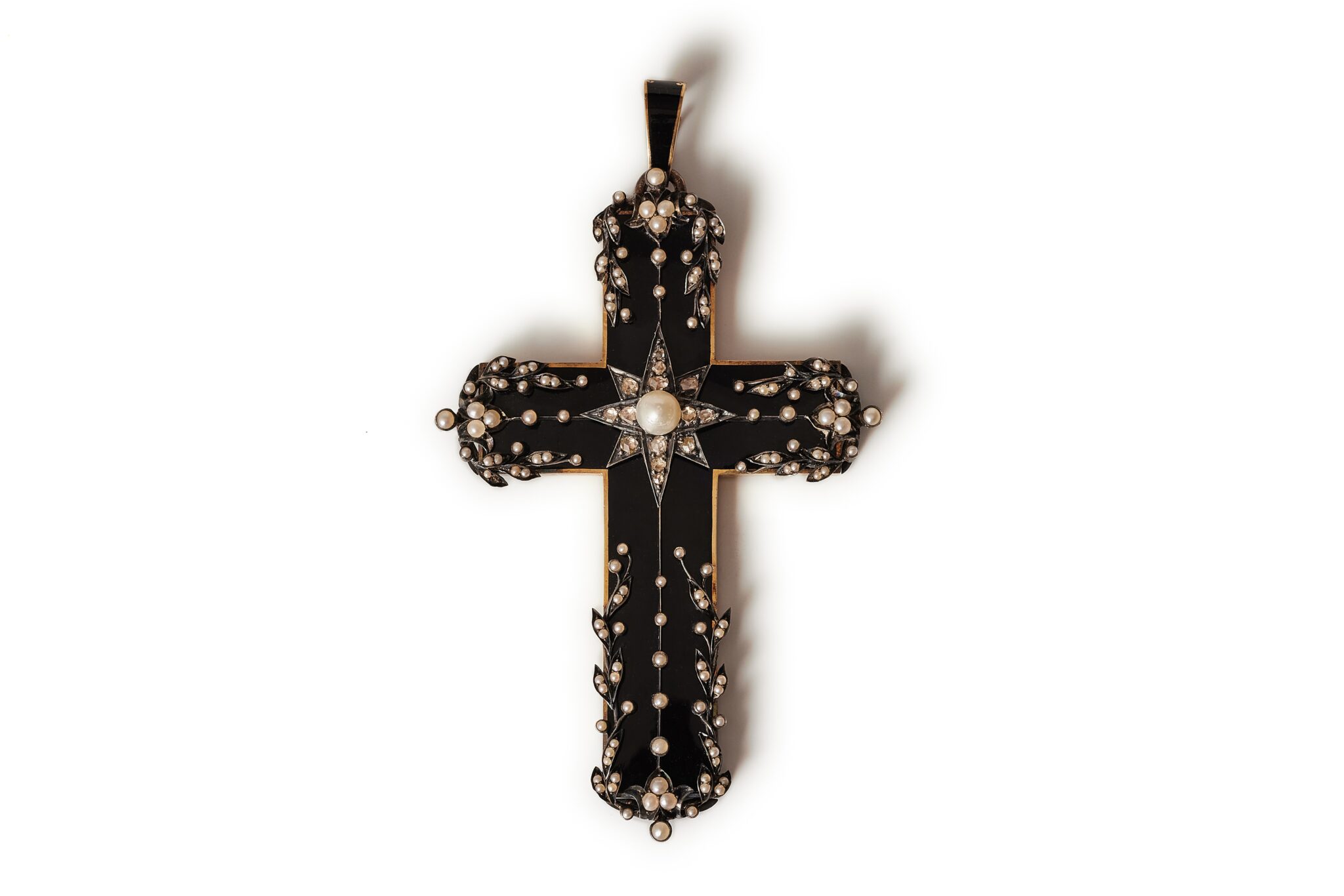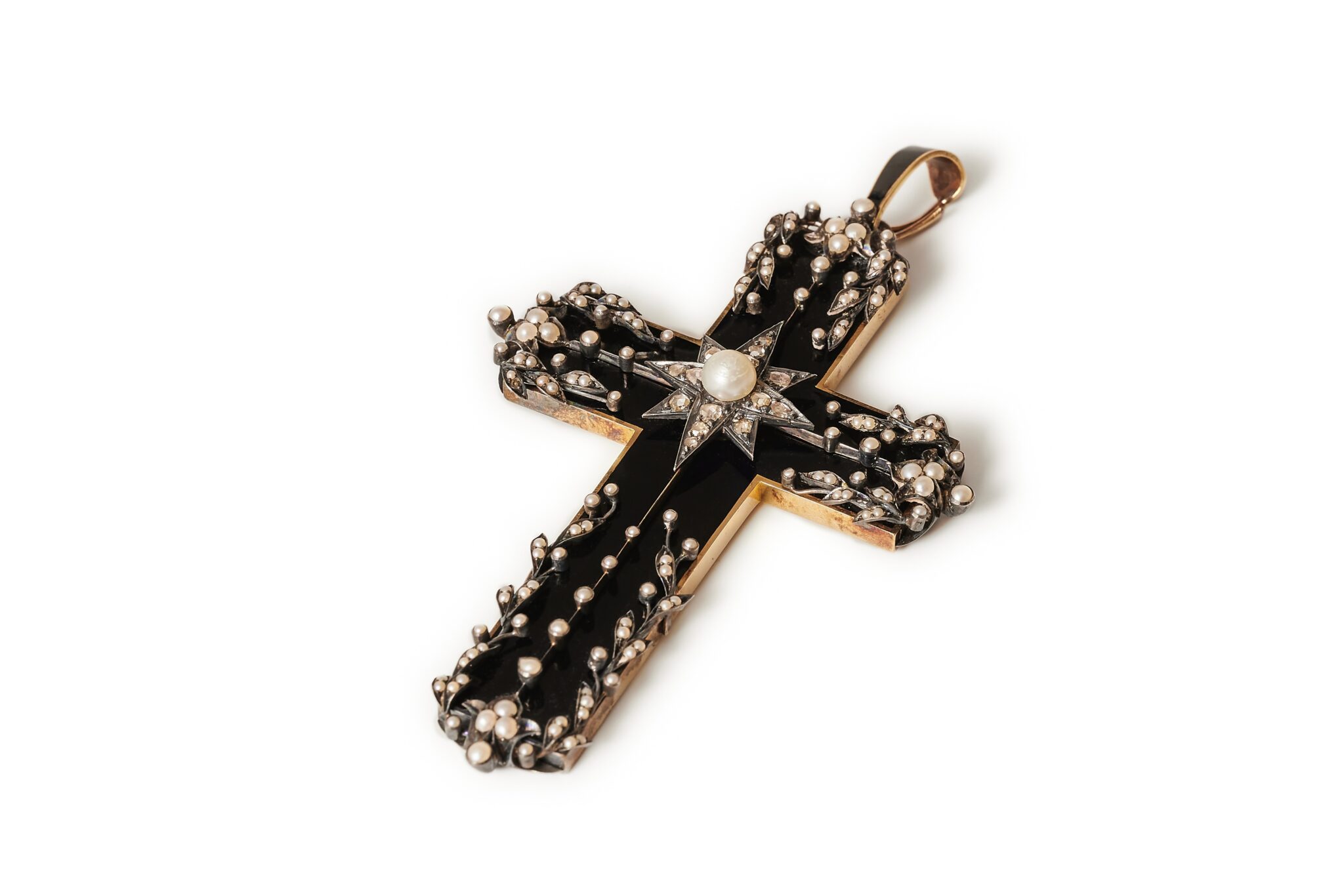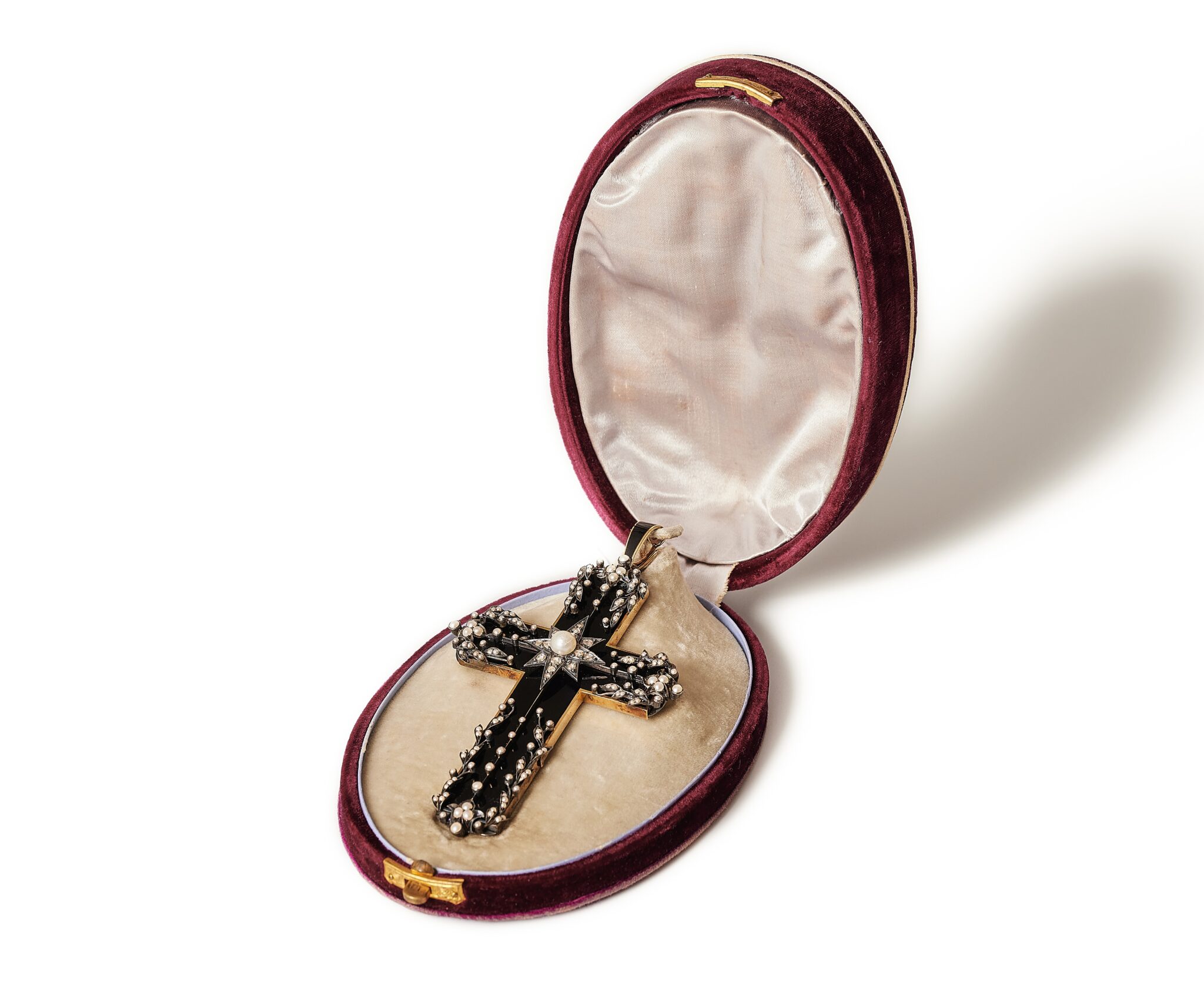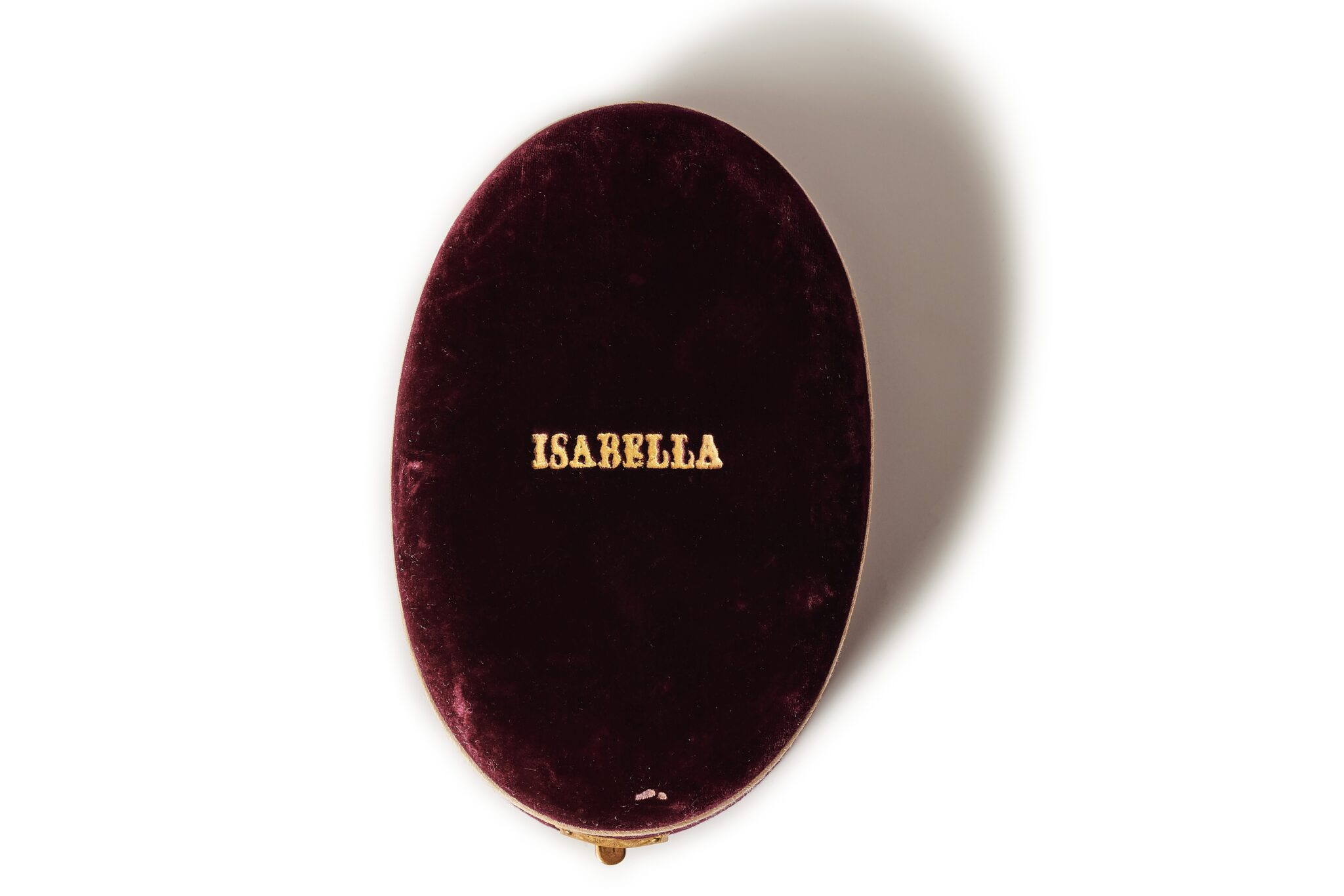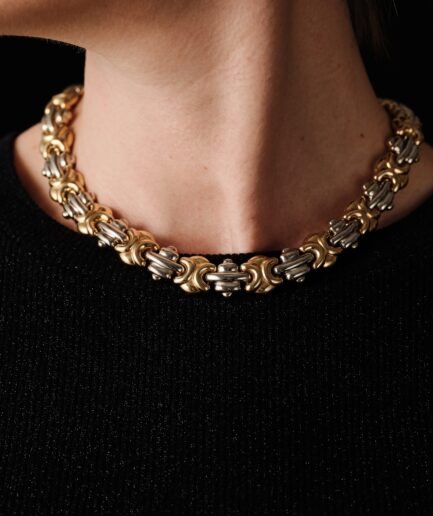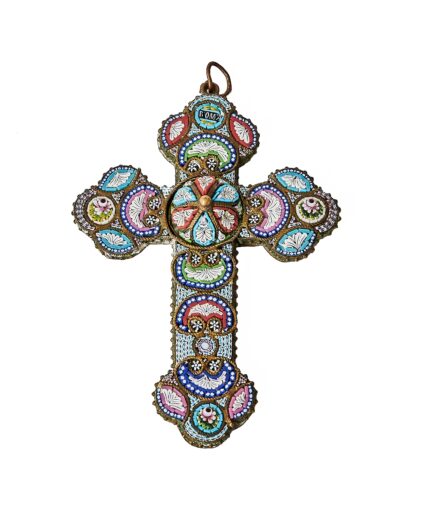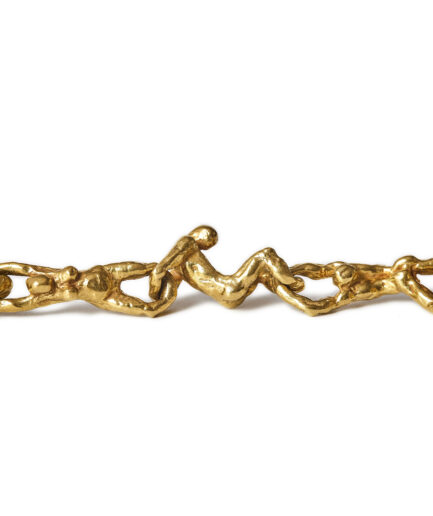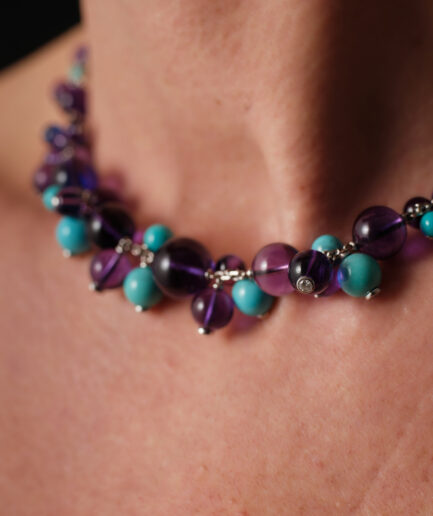A big antique Victorian mourning cross. Ornately decorated with small river pearls around a silver star set with rose-cut diamonds centering a pearl. On the back is a small relics compartment.
Weight approx. 33.6 grams.
Tested for 14k gold. Unmarked.
Dimensions approx. 10.0 (incl bale) x 5.8 cm / 3.937in x 2.283in
In original burgundy velvet case that has the name Isabella on it.
The exhortation memento mori, which literally translates to remember death, urged the wearer to live a moral life.
The popularity of mourning jewelry reached its peak during the Victorian era (1837-1901).
While mourning customs varied according to status, generally they were very detailed –women had to wear all black for a designated period of time and were restricted in what they could do socially after the loss of a loved one. Those who didn’t comply were shunned.
Wearing black was an outward display of what your inner feelings were supposed to be at the time.
Carrying a loved one’s hair has been a meaningful tradition for centuries, rooted in love, memory, and symbolism. In the 18th and 19th centuries, especially during the Victorian era, it was common for people to exchange locks of hair as tokens of affection. These strands were often braided into chains, set beneath glass in lockets, or fashioned into rings and bracelets, allowing someone to carry a tangible piece of their beloved close to them.
Hair also played an important role in mourning practices. Because it does not decay, it was seen as a lasting remnant of a person’s physical presence. Families would preserve the hair of the deceased in lockets, brooches, or intricately woven jewelry, creating keepsakes that honored memory and loss. Mourning jewelry from this time often combined woven hair with pearls, symbolizing tears, or black enamel, representing grief.
Beyond sentiment and mourning, hair was believed to hold a person’s essence or life force. Carrying it was thought to keep you connected to them spiritually, whether they were far away or had passed on. This belief made hair an especially powerful keepsake for lovers separated by distance or war, for parents cherishing a child’s baby curls, or for anyone wanting to keep the presence of someone dear always near.

